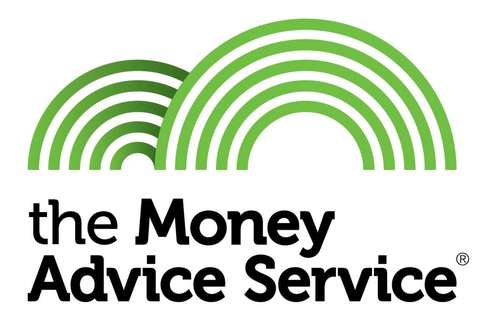
- Amanda Gillam
- 24th July, 2017
- Money & Finance
Why is there a market for Short-Term Lending?
Research conducted by the Money Advice Service in 2016 concluded that 40% of the UK’s working population have less than £100 in savings. This is a frightening statistic. It means that many millions of people have no buffer should they suffer even a mild emergency. Something as simple as their washing machine breaking down will cause them financial hardship.
The lack of savings is only partly a function of income. Many relatively well-off households (income over £30,000 p.a.) who aren’t classified as “low income” struggle to save. On the other hand it has also been shown that nearly 25% of adults on “low income” (earning less than £13,500 p.a.) have managed to build up savings of over £1,000.
The issue therefore seems to be more to do with a poor “savings habit” driven in part by today’s consumer society – after all we’re constantly bombarded with advertising messages tempting us to part with our cash. Perhaps we should conclude that those who manage to save have built up a resistance to temptation and have a plan in place to ensure that they save regularly.
The statistics show that the UK has one of the lowest savings ratios of any country in the G20. And recent trends show that the rate of saving by UK households has been declining year on year since the early 1990s. In fact the savings ratio for the first quarter of 2017 (1.7%) was the lowest since the first quarter of 1963!
With such a poor record of saving it is no surprise that a large number of UK households are constantly borrowing from the short-term credit market to keep themselves afloat. Occasionally borrowing when expenditure outweighs income and then repaying when income is greater than expenditure.
A Brief History of Short-Term Lending
You may think that lending to households over short periods is a relatively new phenomenon, but you’d be wrong. In 1728 RBS developed the overdraft facility to help businesses handle small cash flow issues. Over the following decades this facility was taken up by all banks, and eventually extended to individuals’ rather than just companies.
Home Credit, sometimes known as doorstep loans, has been around since Victorian times. In fact, the largest lender in this market, Provident, is approaching its 140th birthday. Such lending has always been about providing appropriate levels of credit to people who are ill-served by normal lenders or excluded altogether. And this has always been driven by a face-to-face service, hence the name doorstep loan. No bank account is required as the loan is made in cash.
Innovation is just as present in the financial market like any other. The USA is responsible for two innovations in the short-term credit sector one of which has worked for the consumer and one of which has failed them.
Credit cards arrived in the UK from the USA in 1966 – the Barclaycard being the first incarnation. Credit cards were rapidly adopted by consumers and were commonplace by the 1980s/90s. By 2000 50% of adults had one. Such cards work particularly well for consumers if the balance is paid off at the end of each month as the user can therefore get c.45 days of interest-free credit. While these cards have not been immune from criticism (some think interest rates are too high) on balance the function that they provide is very helpful.
However, the second financial innovation from the USA, the payday loan, almost brought the whole short-term lending market into disrepute. Developed in the 1980s in the USA the payday loan was intended to bridge the time gap between getting paid and needing to spend. In simple terms a payday loan would never be for longer than 30 days – you borrow a small sum and then repay it in its entirety plus interest when you were next paid.
The High-Cost Short-Term Loans Controversy
As we’ve seen home credit, bank overdrafts and even credit cards between them have been around for a very long time. Each serves a slightly different market but the end objective is the same. Interest rates on such credit products are never going to be the lowest (because of the risk of default) but they have always seemed reasonably fair. And generally consumers have been treated fairly too.
However, the UK’s payday loan market rapidly got out of control. Between 2004 and 2012 the market grew 20 fold to £2.8bn and brands such as Wonga had become household names. Though still small in relative terms (at the same time there was £55bn of credit card debt) there was disproportionate attention being paid to payday loans thanks to a legion of stories about irresponsible lending and the threatening practices of some lenders.
Wonga and a host of other lenders were referred to the Competition Commission for a full-scale enquiry. As a result of this 50% of the short-term lenders investigated decided to close down their businesses. In 2015 the Financial Conduct Authority (FCA) introduced new regulations and began to supervise the payday loans with powers to tackle any lender who did not comply.
Cleaning up the High-Cost Short-Term Loan Market
The new rules implemented by the FCA at the start of 2015 have seen a dramatic improvement in the way all high-cost short-term loan lenders operate in the market. The new rules that led to this better behaviour include:
- A cap on charges to lower payday loan interest rates – interest and fees on new loans, including those rolled over, cannot exceed 0.8% per day of the amount borrowed (i.e. £24 of interest on a £100 loan over 30 days)
- The total amount repaid can never be more than double the amount borrowed
- A limit of £15 for default fees
- Limits on the number of times you can roll over a loan to the next month
- Financial health warnings on all marketing material, websites and communications.
The FCA is very conscious that it has to protect the most vulnerable in society from unscrupulous lenders. The people it needs to protect include those:
- On a low income
- Who have been excluded from credit products altogether
- Who have a bad credit history
- Who might be tempted to use an unregulated lender (i.e. “loan shark”).
From a low point in 2013 much of the short-term loans industry is now well-regulated and committed to responsible advertising and consumer protection although there is still room for improvement within the behaviour and practices of some lenders and their products.
Although public perception may be slow to appreciate just how much the industry has improved in recent years, alternative loans continue to be a necessity for a large number of people with a poor credit history or no credit history at all who do not have easy access to mainstream credit facilities. An estimated two million people in the UK use short-term loans, according to the Public Accounts Committee (PAC) so it is clearly not just those unable to obtain a bank account.
Consumer Perceptions of the Short-Term Credit Market
The Consumer Finance Associate (CFA), who is the principal trade association for short-term lenders, conducted a survey last year that looked at the UK’s short-term credit market following the FCA’s intervention. Its main findings were as follows:
- The average daily cost of loans has fallen from 1.3% (2013) to 0.7% (2015) and is lower than the maximum allowed.
- The percentage of loans on which default fees are levied has halved to 8%
- Consumers now see these loans as more affordable than before – 56% of those who took out a loan since 2015 consider it “an affordable way of borrowing” compared to only 43% before.
- 90% of consumers consider these loans to be convenient.
- The number of loans made is considerably smaller than before regulation – 42% lower in Jan-Apr 2016 than in the same period in 2013.
- The affordability assessment now means that borrowers are coming from a higher income bracket than before. But this does mean that lower-income groups are being excluded from credit.
Treating Customers Fairly
All lenders and brokers must ensure that applicants are treated fairly when applying for credit and during the process of managing credit taken. Our broker service adheres to the following principles:
- We ascertain the appropriateness of the requested service for all new customers prior to accepting a deal, ensuring it is in line with their knowledge and experience.
- We continually aim to understand the needs of our customers.
- We aim to keep our clients fully informed in a clear and fair manner that is unambiguous and not misleading.
- We ensure our services are delivered with clarity and transparency and do not contain hidden conditions or rely on complex technical definitions.
- We will keep an accurate and comprehensive record of all our dealings with a customer so that in the event of any dispute or discrepancy, we will be able to provide a full breakdown of interchanges between all parties.
- We make certain our clients understand the risks associated with our services at the outset of an instruction, where appropriate.
- We work hard to ensure that service and risk information remains clear and prominent at all times.
- In the unlikely event that there is a conflict of interest, we will inform our customers as soon as possible once we become aware of it.
The Solution Loans Approach to Short-Term Lending
We see one of our key roles to be “financial education”. We’ve always found it odd that such an important life skill is not taught at school or college. Young adults emerge into an environment that is barraged by advertising both for goods and services and the credit products to “pay” for them. Messages about being financially prudent or about planning for the future are drowned out. Good financial habits are virtually impossible to develop. And this isn’t helped by an economic environment where price growth for consumer goods/services and property is outpacing income growth.
While we are a credit broker we take our education role very seriously. As you travel around our website you’ll notice:
- How it’s split into clear colour-coded sections that each focus on a specific type of credit and provide clear content about how it works
- 60-second explainer videos for each of the main credit products we work with
- Our Find A Loan tool that aims to narrow down the relevant options based on the visitor’s requirements
- A loan calculator that can help a visitor compare the costs of some of the alternative loan options that may be relevant
- Our blog that contains hundreds of articles about saving money on day-to-day purchases, others that talk about financial planning and good practice, and others that compare and contrast specific financial products.
- Throughout the website there are links to organisations that can provide specific financial advice for free e.g. Money Advice Service and various debt charities.

Choosing the Right Type of Short-Term Loan
So, what’s our approach to helping you find the right short-term credit option?
First off – we can’t advise you because we are not in the possession of all your personal circumstances. What we can do is help you think through the options so you can make your own choice.
- Do you really need to borrow at all? Would it be better to make savings to your household budget and to start to create an emergency fund instead? If you already have debt is it sensible to add more debt to the pile?
- If you still want to borrow then what are your options? If you have a bank account then you should find out the cost of obtaining an authorised overdraft – don’t go overdrawn without seeking approval from your bank as you will incur disproportionately high charges. You can also use our “Find Loan” tool to investigate your other options.
- Find Loan tool – 4 quick questions to help narrow down your options
Amanda Gillam is Solution Loans's General Manager and has been since 2009. She is also a prolific writer on personal finance issues, and has been quoted numerous times in articles published on 3rd party websites and in press releases. Her...Read about Amanda Gillam
Categories
- Better Borrowing (215)
- Bad Credit Loans (23)
- Car Finance (28)
- Credit Brokers (11)
- Credit Cards (15)
- Doorstep Loans (13)
- Equity Release (3)
- Guarantor Loans (41)
- Logbook Loans (8)
- Mortgages (10)
- Personal Loans (16)
- Secured Loans (20)
- Short Term Cash Loans (31)
- Credit History & Credit Future (30)
- Ditching Debt (41)
- Household & Family (177)
- Better Budgeting & Saving (46)
- Cars – running costs (12)
- Energy bills (19)
- Food bills (13)
- Holidays (12)
- Mobile Phones & Broadband (11)
- Travel (11)
- Yourself (14)
- Income & Work (60)
- Money & Finance (168)
- News (90)
- Property (52)
- Home Rental (10)
- Home-ownership (43)
- Top Tips (106)
- Video & Infographics (30)




